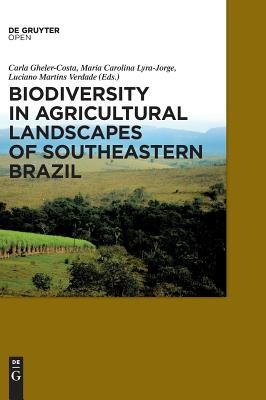
- We will send in 10–14 business days.
- Publisher: De Gruyter Open Poland
- Year: 2016
- Pages: 366
- ISBN-10: 3110480832
- ISBN-13: 9783110480832
- Format: 18 x 25.7 x 3.1 cm, kieti viršeliai
- Language: English
- SAVE -10% with code: EXTRA
Biodiversity in Agricultural Landscapes of Southeastern Brazil (e-book) (used book) | bookbook.eu
Reviews
Description
The state of São Paulo, Brazil, is one of the most densely populated and developed areas in South America. Such development is evident both in terms of industrialization and urbanization, as well as in agriculture, which is heavily based on sugar cane, Eucalyptus plantations and livestock. This intense land use has resulted in great alteration of the original land cover and fragmentation of natural ecosystems. For these reasons, it is almost a paradox that jaguar, a species that requires large areas of pristine forest to exist, is still found in some parts of the state of São Paulo. It is possible that wild animals could leave in coexistence with intense land use, or is it the case that such rare encounters with large wild animals in São Paulo will disappear in the near future?
All ecologists are aware of the problems of habitat changes caused by humans, but it was not until recent years that researchers started to consider that the land used for production could also serve as an important habitat for many different kinds of wild species. This book is about this new approach to conservation. It also highlights the important role that sciences could and should have in this discussion in order to better understand the problems and propose possible solutions.
EXTRA 10 % discount with code: EXTRA
The promotion ends in 22d.22:14:47
The discount code is valid when purchasing from 10 €. Discounts do not stack.
- Publisher: De Gruyter Open Poland
- Year: 2016
- Pages: 366
- ISBN-10: 3110480832
- ISBN-13: 9783110480832
- Format: 18 x 25.7 x 3.1 cm, kieti viršeliai
- Language: English English
The state of São Paulo, Brazil, is one of the most densely populated and developed areas in South America. Such development is evident both in terms of industrialization and urbanization, as well as in agriculture, which is heavily based on sugar cane, Eucalyptus plantations and livestock. This intense land use has resulted in great alteration of the original land cover and fragmentation of natural ecosystems. For these reasons, it is almost a paradox that jaguar, a species that requires large areas of pristine forest to exist, is still found in some parts of the state of São Paulo. It is possible that wild animals could leave in coexistence with intense land use, or is it the case that such rare encounters with large wild animals in São Paulo will disappear in the near future?
All ecologists are aware of the problems of habitat changes caused by humans, but it was not until recent years that researchers started to consider that the land used for production could also serve as an important habitat for many different kinds of wild species. This book is about this new approach to conservation. It also highlights the important role that sciences could and should have in this discussion in order to better understand the problems and propose possible solutions.


Reviews